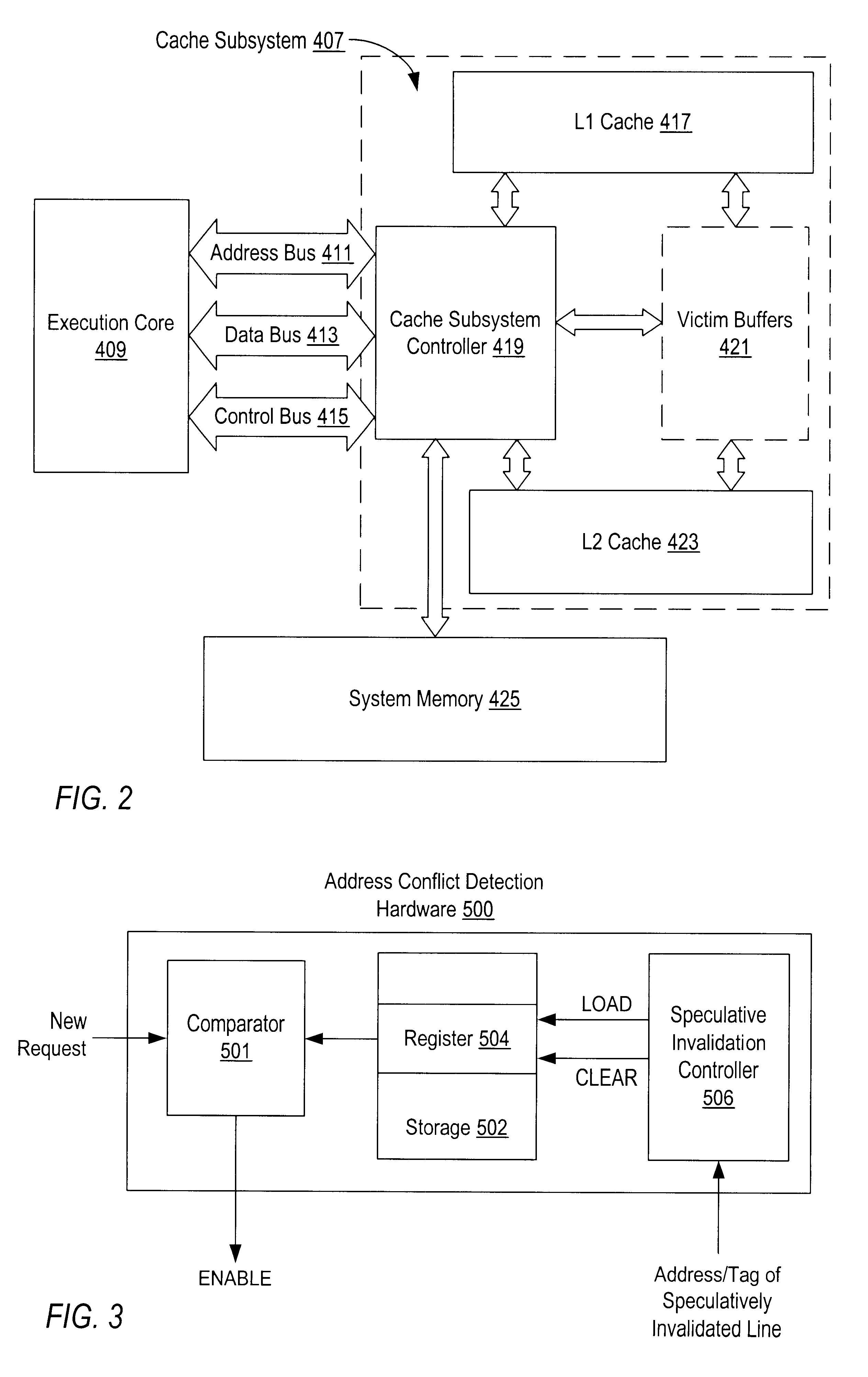Method and system for speculatively invalidating lines in a cache
a cache and line invalidation technology, applied in the field of caches, can solve the problems of not being able to access the data from a mass storage device in as many cycles as it takes to access the data from a mass storage devi
- Summary
- Abstract
- Description
- Claims
- Application Information
AI Technical Summary
Problems solved by technology
Method used
Image
Examples
Embodiment Construction
Cache Subsystems
Computer systems (such as those illustrated in FIGS. 6 and 7 below) typically employ cache subsystems. Typically, these cache subsystems include an L1 cache integrated with a processor and a non-integrated L2 cache. However, as advances in process technology enable higher integration in semiconductor devices, microprocessor designers are now able to include second-level (L2) caches on-chip as a way to further improve performance. By integrating the L2 cache, transfer latency and transfer bandwidth between the L1 and L2 caches may be improved since communication will no longer need to take place through pins.
Traditional approaches have designed the primary (L1) cache with the goal of making the L1 cache as large as possible without incurring additional access latency. This large L1 cache has traditionally been complimented with a similarly large L2 cache, normally as large or larger than the L1 cache, that has a latency that is normally greater than that of the L1 cac...
PUM
 Login to View More
Login to View More Abstract
Description
Claims
Application Information
 Login to View More
Login to View More - R&D
- Intellectual Property
- Life Sciences
- Materials
- Tech Scout
- Unparalleled Data Quality
- Higher Quality Content
- 60% Fewer Hallucinations
Browse by: Latest US Patents, China's latest patents, Technical Efficacy Thesaurus, Application Domain, Technology Topic, Popular Technical Reports.
© 2025 PatSnap. All rights reserved.Legal|Privacy policy|Modern Slavery Act Transparency Statement|Sitemap|About US| Contact US: help@patsnap.com



